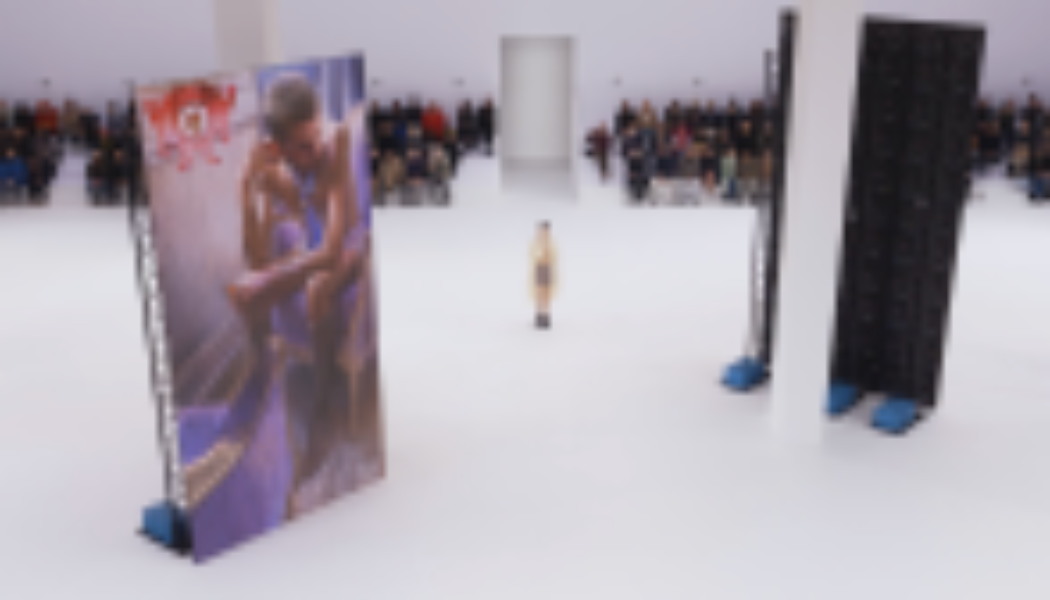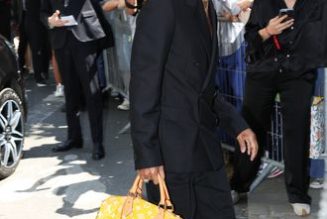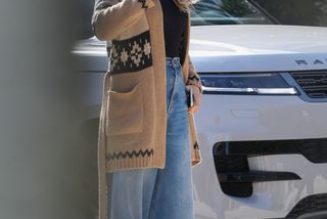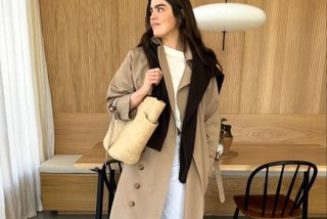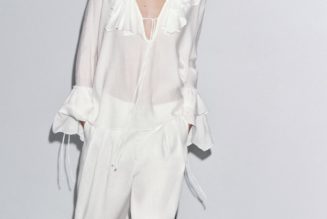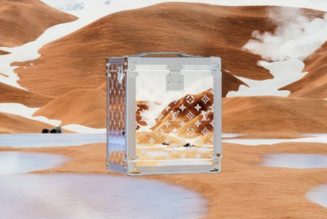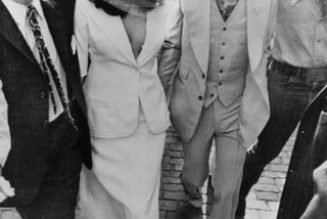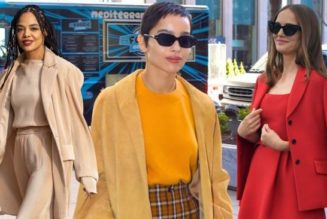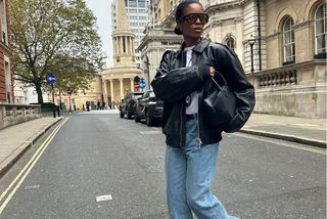Over the weekend in Paris, Spanish luxury fashion company Loewe debuted its 2023 Fall/Winter Ready to Wear collection with a show that toyed with audiences’ ways of seeing, bringing looks that mimicked glitching digital images and apparently solid artworks that were designed to fall apart.
The showcase was Loewe creative director Jonathan Anderson’s latest attempt to visualize the ephemeral in clothing and exemplified the brand’s “reductionist” approach, whereby items like loose sheath dresses and oversized trench coats leave out embellishments to take on simpler forms.
At the show, images appeared out of focus, as models emerged one by one, wearing shapeless white frocks that functioned more like moving canvases than clothes. On the frocks, Anderson printed blurry trompe-l’œil images of sweaters and dresses that were produced for past shows, describing these looks as “ghosts” of the brand’s past.
Helping Anderson draw out the idea was the Italian artist Lara Favaretto, who joined a long line of artists tapped by major designers to complement runway scenes with work that reinforces their high concepts.
Throughout the stark white space, Favaretto — known for sculptures and site-based works that play on the temporal — placed 21 sculptural cubes. The blocks, dubbed “momentary monuments” are formed by compressing confetti, the cubes’ sole material, for several hours.
Anderson’s decision to include these Instagram-ready pieces in the Paris show, however, was more than decorative. Unsecured by “glue or armatures,” according to Turin’s Galleria Franco Noero, who represents Favaretto, the minimalist sculptures reinforce ideas of impermanence that Anderson was considering when producing the collection. The blocks, when they’ve been showcased in museums before, have eroded and crumbled as time goes on. At the show, Loewe’s models brushed up against them as they traversed the venue’s floor, running the risk of undoing these meticulous obstacles. (Favaretto, similarly elusive, declined to be interviewed.)
Favaretto has long played with dissipating materials. In 2019, at the 58th Venice Biennale, the artist presented Thinking Head, a multi-part installation that involved a white fog being released from the top of the Giardini della Biennale’s central pavilion. The fog created an off-white haze over the building’s entrance, a scene that the New York Times described as biennale curator Ralph Rugoff’s attempt to portray the zeitgeist’s “foggy shared present.”
Anderson’s new collection draws on a similar nebulous quality from Favaretto. Sheath-like garments have been printed with out-of-focus digital images of dresses, an effect that The Cut’s Cathy Horn suggested invoked Gerhard Richter’s blurry photorealist paintings. Meanwhile, Anderson told Vogue that he was considering how the blurry images called to mind the fashion’s world’s rapid pace and its online fixations, appearing to audiences like moving illusions.
“Playing with blur,” the label’s show notes read, is Anderson’s way “to stress that fashion, rather than being about the moment is about the later.”
With various parts of the collection, Anderson has embraced a time-bending element, one that fits in with his ongoing flare for the hyperreal. Images of ‘sticker’ sweater cardigans were affixed to models’ torsos like adhesive wall paper, while puffed leather jackets with glossy veneers left models appearing like plastic toy figures. A gold ball that appeared to hold up a curtain-like gown was made to look like the metallic element was nailed to the girl’s sternum; the piece seemed designed to accentuate its model’s litheness. Elsewhere, dresses only appearing to look textured —with images of florals to brown and black furs— had the kind of sheen only machinery can produce.
In the days leading up to Paris Fashion Week, fashion historian Eugenia Paulicelli told ARTnews that the couture houses are attempting to mine “ways to look at chaos.” For Loewe, Anderson’s interest in synthesizing online speed and evoking images flitting out of grasp — a focus on “what may seem unclear,” according to the brand’s show notes— was in line with high fashion’s recent penchant for disorienting its viewers.
